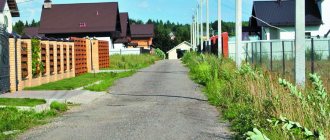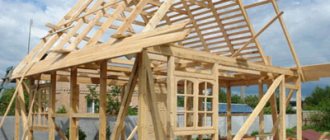Division of lands within the framework of the Land Code
Each plot is located in the composition of lands, characterized by a specific purpose:
- territories of populated areas;
- agricultural grounds;
- protected areas;
- areas for the location of industry and technical facilities;
- water fund;
- reserve lands;
- forest area.
In addition to the designated purpose assigned to each territory, the lands are characterized by a permitted type of use, of which there are more than three thousand in Russia. For agricultural areas, certain application methods are provided:
- construction of residential buildings;
- agricultural production;
- gardening;
- raising animals and poultry.
As for allotments within cities and towns, they have a different use:
- construction of block buildings for housing;
- construction of country houses;
- individual house construction.
Types of purpose of land plots
When choosing land, the future owner takes into account his own needs and purposes of acquisition, determines the need to live on the site - the purchase of a site with the appropriate type of permitted use depends on this. The generally accepted purpose of the sites:
- DNP stands for dacha non-profit partnership, formed in the form of legal ownership, for the partnership activities of the owners of dacha plots. Located only on agricultural lands.
- SNT is a gardening non-profit partnership, registered as the joint legal ownership of the owners for the purposes of gardening and horticultural activities. These plots are also located in agricultural areas.
- Private household plots
- IZHS stands for a site for individual housing construction, these are sites for permanent houses, their location is provided within the boundaries of cities or other populated areas.
Pros and cons of a garden partnership
Compared to other forms of land management, SNT has its own characteristics.
The advantages of this partnership:
- Low cost of land compared to individual housing construction.
- There are no area restrictions for building a house.
- Lower tax fees.
- Advantageous location, since usually SNT sites are located next to forests and reservoirs.
- Fertile lands, which is important for those planning to conduct agriculture.
But SNT lands also have disadvantages:
- The partnership itself collects money for maintaining the territory.
- You can only register through the court.
- Lack of communications. You will have to carry them out entirely at your own expense.
- SNTs are located far from regional centers, which means they do not have developed infrastructure.
- It is extremely difficult to get a bank loan to purchase such land.
- Long term for processing tax deductions.
It is also worth considering that from March 1, 2021, the project to build a house on a plot in SNT must be coordinated with the local administration. If approval is successful, a permit will be issued for 10 years.
Some features of the lands of DNP and SNT
Recent changes in legislation allow the placement of plots of the SNT and DNP categories on intra-village lands. The decoding is clear to the owners, but how do these areas actually differ, and what do they have in common?
The subtleties and nuances between the purpose and type of use of these lands are so blurred that it is difficult for them to distinguish even for lawyers. The commonality in the use of land categories is visible in the conduct of communications; this requires the consent of all members of society and the passage of a series of authorities in order to obtain a legally competent permit to carry out work. If the owner wishes to register a building located on plots of this type as housing, the owner almost always receives a justified refusal. In order to fulfill the planned plan, he needs to request an examination to obtain an opinion on the compliance of the structure with all housing standards, then apply to the judicial authorities to obtain permission for permanent registration.
Such actions by the owner will lead to registration if all documents are completed during the construction of the village and the settlement is organized legally.
When purchasing, it would be useful to study and check the seller’s documentation. The most profitable option is to purchase a plot of land in the DNP category, since with some persistence the owner receives permission to register, but the plot has a relatively low price. To obtain membership in partnerships and partnerships on the agricultural lands of SNT and DNP, you must be 18 years old and purchase a membership book that confirms the status of the participant. The document is issued within a three-month period after joining these formations. In a partnership or partnership, commercial activities cannot be developed on the site, and membership fees are spent on the personal needs of all participants .
What is possible and not possible on the land of SNT?
It is important not only to know what DNP, SNT and other land ownership options are, but also to understand what can be done on this land.
With garden plots you can carry out transactions of purchase and sale, donation and inheritance. You can also:
- Build houses and outbuildings.
- Create a vegetable garden.
- Change the status of the site.
At the same time, it is prohibited in SNT:
- Engage in farming and entrepreneurship.
- Conduct communications without agreement with other members of the partnership.
- Violate the rules established at SNT meetings.
Until March 1, 2021, a dacha amnesty is in effect, which allows you to legalize buildings on plots according to a simplified scheme.
The concept of SNT
On lands of this category, agricultural crops are grown and buildings necessary for their processing and preservation are located. It is permitted, if necessary, to erect residential buildings on the site.
Documents of a non-profit gardening partnership
The charter is adopted as the main document, in which all changes or additions are made at the general meeting of all participants. The charter contains the following provisions:
- general information and purpose of formation, the rights of the partnership as a legal entity and its responsibilities;
- the property of the partnership is transferred;
- the conditions for membership in the SNT are indicated;
- management bodies are described and the boundaries of their competence are determined;
- the control bodies, their activities and forms of control work on the redistribution of material resources are indicated;
- the ways of forming a special fund are listed;
- the boundaries of the partnership's liability for debts and the procedure for office work have been determined;
- provides for the procedure for the reorganization or liquidation of SNT.
Are there any fees for SNT members?
This question worries the new owners of plots in the formation.
The solution is found by reading the Federal Law of April 15, 1998 on the activities of vegetable gardening, dacha and horticultural societies, where Article 19 contains information on contributions. It states that all participants in partnerships and partnerships are required to pay membership fees, but the procedure for collecting them is not specified. The procedure for collecting contributions is determined by the accountant in his own way, but the amount is determined depending on the size of the plot. Each charter may provide for a one-time fee upon joining the partnership.
Positive aspects of a non-profit gardening partnership:
- the buyer pays much less money for the plot, in contrast to individual housing construction;
- clean atmosphere due to the location in the countryside;
- It is permitted to use the plot without erecting a residential building.
Cons of SNT
- the owners pay for communications to the partnership plots; this is expensive and sometimes impossible due to the distance of the main highways;
- difficulties in obtaining permanent registration due to the location outside the residential zone, and going to court brings results, but costs money and time;
- the use of land as collateral is perceived negatively by banking institutions; this practice is rarely used;
- Regardless of the size of the residential building, it is considered as a country house, which does not make it possible to receive compensation for it upon sale, since the valuation of country houses is cheap.
Land in this category is allocated in picturesque areas, so the difference in their price is determined only by the convenience of communications and roads.
Houses in SNT
The main purpose of the plots is to grow crops. A frequent question is whether the chairman of SNT can sell plots? The law does not provide such powers. If the land is abandoned, it still has an owner - either an individual or the city administration. In the second case, the authorities may entrust the chairman with the right to carry out a purchase and sale transaction, but he will act solely as an intermediary. The same applies to the question of whether SNT can sell the plot. An example of SNT is our project “Myoshin estates”.
Advantages:
- low cost;
- there is clean air in the SNT area;
- fertile soil.
Flaws:
- the permitted maximum plot size is 15 acres;
- it is impossible to register outside a populated area, if SNT is within the city, it is theoretically possible to obtain registration there, but it is difficult and expensive;
- laying of all communications is carried out at the expense of the owner;
- Regardless of the size of the house, it is considered a garden house, therefore, it will not be possible to sell it at a high price;
- Most banks do not accept land as collateral.
Dacha non-profit partnership
Designed for growing a garden, a small vegetable garden and the construction of country housing.
The law allows the placement of plots of this category within a residential zone, then their characteristics are similar to individual housing construction. Positive points of use:
- low cost of allotment compared to SNT and individual housing construction;
- in the case of a suburban location - all the advantages of rural ecology;
- the opportunity to participate in partnership formation meetings and influence the adoption of common issues;
- if the plot is located in an urban area, permanent registration is completed with less difficulty;
- technical expertise of a residential building is optional, this does not depend on the size of the house.
Disadvantages of the DNP site:
- first of all, the land is considered as agricultural, therefore the construction of a small house is relevant, but building permanent housing is problematic;
- sometimes carrying out communications or a road to a site costs more than purchasing the plot itself, if you hire specialized services for this;
- the initial inclusion of the cost of constructing highways in the price of a land plot leads to its sharp rise in price;
- despite the provided constitutional right to register the owner and his family on the DNP site, the procedure takes a long time and requires certain material costs;
- when applying for a mortgage, plots are not considered as collateral;
- it is necessary to erect a summer house building, since the purpose of operation is not only the cultivation of a garden and vegetable garden.
What is the main difference between SNT and individual housing construction and DNT?
Faced with the need to purchase or already sell a plot of land, many citizens learn about the existence of certain concepts that apply to land. Such concepts define in advance the basic principles of ownership and use, as well as what operational actions can be carried out with them.
The most common abbreviations that define the main characteristics of land are the following:
- Individual housing construction – plots used for individual housing construction;
- DNP – dacha non-profit partnership;
- SNT is a gardening non-profit partnership.
Categories of land in a settlement
If we talk about the categories of land from which plots for SNT, DNP and individual housing construction can be allocated, then already at this stage of consideration there is a difference - land for construction is always allocated from the boundaries of those territories that are located within the boundaries of settlements.
In contrast, SNT and DNP can belong to lands that have a strictly agricultural purpose, while if DNP can sometimes be located within the boundaries of settlements in the presence of certain factors, then a garden partnership has a clearly limited scope - only the agricultural category.
When purchasing a plot of land, it is very important to obtain information in advance about the status of the land that includes the future property.
This factor may subsequently determine the need to make certain contributions, obtain permits to carry out certain types of work on it, as well as the possibility of performing various actions, in particular, which is very important for many owners, this is a restriction on the construction of residential-type structures.
If you intend to become the owner of land in a garden partnership, you must be aware that the price of a plot of this type (both market and cadastral) can be significantly lower than the cost of that associated with individual housing construction.
First of all, this factor is due to the fact that belonging to an individual housing construction already initially determines the possibility of erecting a capital structure, which has the right to be classified as residential buildings, of course, with parallel compliance with all other requirements (presence of connected communications, etc.).
Obtaining permission to build individual housing construction
Houses built on individual housing construction are initially designed in accordance with the current rules of urban planning regulations, and even at the design stage it is stipulated that the structure must meet the requirements for registration of citizens (registration) in it and their unhindered residence.
It is also possible to register in a constructed facility located on the territory of SNT, but you will first have to apply for transfer to another category, which allows not only to carry out agricultural work.
Subsequently, after the construction of the object, it will be necessary to invite a special commission, which will issue an inspection report of the site, which also includes a conclusion on whether the condition of the structure meets the requirements for residential structures.
Comparison of individual housing construction and non-residential construction
In parallel, the site must have an assigned address, but this is not provided for complexes located outside populated areas. In addition, this category of sites does not imply the presence of a certain infrastructure and nearby government medical and educational institutions, or the provision of communications necessary for living.
On the other hand, by contributing their own funds, plot owners have the right to independently organize the work.
Owners of dacha plots that are part of the DNP have rights and opportunities somewhat similar to those that the owners of plots in the SNT have. A significant difference between SNT and DNP will be that the plots that are part of the dacha partnership, provided that they are located within the boundaries of any settlement, are practically equivalent to plots for individual housing construction.
In this regard, the procedure for registering property rights, constructing real estate objects defined as residential structures and subsequent registration in them is greatly simplified. On the territory of the Russian Federation, there are two types of dacha categories of land - DNT and DNP, the significant difference of which lies in the presence of common property, of which not only legal entities are full members. person, but also all members of the partnership.
For a more clear comparison of SNT and land for individual housing construction and non-residential construction, let’s consider their main characteristics, expressed in the most significant differences in relation to each other.
The plot for individual housing construction has the following advantages:
- possibility of registration in a built house;
- presence of an address assigned to the site;
- the ability to receive paper documentation at the address of the site for individual housing construction;
Registration of individual housing construction - provision at the expense of the state with elements of social infrastructure - medical institutions, schools, kindergartens will be located close to the land;
- presence of communications;
- the possibility of a tax deduction for the erected structure as a residential property;
- the possibility of using the house as collateral when applying for a bank loan.
Among the disadvantages of ownership of individual housing construction, it is necessary to highlight:
- in each region of the Russian Federation there are certain standards for the permissible sizes of allocated plots;
- when constructing a house, there is a need for preliminary approval of the construction project, and both the project itself and all work on the construction of the building must strictly comply with all the standards of GOSTs and SNiPs;
Example of a house construction project - Upon completion of construction, there is a need to put the house into operation. This process consists of collecting the necessary package of documents and inviting a commission;
- Despite the presence of connected communications, there is no guarantee of uninterrupted supply of energy and water.
The positive aspects of having a site as part of the DNP are:
- As a rule, such lands have a lower cadastral value than similar ones under SNT. In addition, their market value in some cases is 25-30% lower than individual housing construction;
- DNPs are currently permitted to be located in residential areas;
- becoming the owner of this type of plot, its owner receives the opportunity to become a member of a partnership and, as a result, the right to participate in meetings held to make decisions on various issues;
- if the site is included in a settlement zone, the possibility of registration in the erected building;
- if the land owner does not need registration on the site, there is no need to conduct a technical examination to recognize the house as residential.
Among the obvious shortcomings and restrictions on DNT lands are:
- in certain situations, it is not possible to erect a residential building on the site;
- if the DNP is not part of a residential settlement, there is a lack of connected roads to the site, as well as water, gas and electricity. If necessary, the owners of the land plot can carry out communications at their own expense, but, as a rule, such actions cost more investments and expenses than the acquisition of the site itself;
- the high cost of land in the DNP, which is being built with the simultaneous construction of roads and communications;
- despite the right of registration in a house located on a plot under the DPN, according to the Constitution of the Russian Federation, the actual registration takes quite a lot of time and requires the collection of a large amount of documentation;
Example of a DNP plan - low probability of using a plot or house in the DNP as collateral when applying for a loan from a banking organization;
- As a rule, lands in the DNP are less fertile than in the SNT, and therefore growing agricultural crops on them requires additional costs for enriching the soil with nutrients.
The advantages of SNT are:
- location of land in more environmentally friendly areas compared to DPN and individual housing construction;
- in most cases, the presence of special transport routes, with the help of which owners who do not have their own transport can get to their sites;
- more fertile lands than on plots of other categories;
- lower cost of plots than plots for individual housing construction;
- no need to build a residential building or any structure.
An example of a certificate of registration of SNT.
The disadvantages of plots for SNT are:
- lack of communications and infrastructure;
- If there is a need to construct a residential building and register it, there is a high cost of time and money for transferring the category of land and obtaining permits. In addition, such an action is not possible for all lands under SNT;
- when constructing a residential building (without putting it into operation) and the need to sell the plot, the price is too low, which is often not even compared with the construction costs.
In general, if we consider types of land, such as individual housing construction, DNP and SNT, they all represent the same category of land ownership - they are private holdings that no longer belong to either the state or the municipality.
Personal subsidiary plot
Private household plots are agricultural plots; their main difference from SNT and individual housing construction plots is their mandatory location in the fields or within the boundaries of a populated area in the form of household plots.
In the case of the field option, only the cultivation of products is allowed, and construction is prohibited. In the urban location, housing construction is provided, but taking into account the required standards. Positive aspects of operating private plots:
- the location of the plot within the city makes it possible to transfer it to the category of individual housing construction;
- taxation is carried out at preferential rates - less than 0.3% of the indicated value according to the cadastre.
Negative characteristics include:
- modern legislation omits such a formation as private household plots, so confusion arises when making transactions;
- When registering ownership of plots located on the outskirts of settlements, there is a dependence on the decision of local municipal services, which may not allow the construction of housing.
Houses in DNP
Is it possible to build a house in DNP? It’s not just possible, but necessary, because according to the law (unlike SNT), there must be a residential building on the DNP site, although without a foundation and load-bearing walls, so it is unlikely to be suitable for permanent residence. And the land in the summer cottage is not as fertile as in the garden. After all, the main purpose of a dacha is relaxation.
In all other respects, DNP and SNT are similar: these are officially registered associations of owners that resolve all organizational issues regarding the maintenance and arrangement of common areas jointly and at their own expense (membership fees to SNT and DNP).
Advantages:
- low price;
- within the city limits, registration in the DNP is possible;
- dachas, unlike permanent houses, are not subject to particularly strict requirements.
Flaws:
- You will definitely have to build a house on the DNP site, but it is prohibited to build a permanent residential building with a foundation there;
- communications are laid at the expense of the owner;
- infrastructure is insufficiently developed;
- when selling a dacha, the costs of building a house will not be covered;
- It is almost impossible to buy a property with a mortgage.
Individual housing construction plots
These are plots within a city or town intended for the construction of permanent housing. Such plots have their own postal address; the owners of the house formalize permanent registration of family members or other people. These areas always have communications (electricity, communications, sewerage, water supply, gas lines). If the installation work is just being carried out, then the house owners pay for the connections to their houses, and the main highway is carried out at the expense of local government.
These plots (registered as property and entered into Rosreestr) and houses can be used by the bank as collateral when taking out loans for any purpose. The cost of plots with buildings located on them is high and depends on many factors (location, size of the plot, size of the building, outbuildings, quality and number of floors of the house and construction materials).
Allotments in the form of individual housing construction have disadvantages:
- limiting the area of the site;
- before construction, a project is developed with many approvals, after construction is completed, commissioning is carried out;
- high cost of plots due to urban location.
Provision of land plots from agricultural lands
Even before the new land code came into force, the allocation of plots related to dachas and included in the SNT took place on the basis of perpetual use rights. Subsequently, when the adopted law began to take effect, plots of this type were allowed to continue to be used by citizens, but some restrictions already appeared in their property rights.
The restriction was due to the fact that the use of the site continued throughout the life of the person to whom it was presented as ownership. Thus, after the death of a citizen, the fact of entering into an inheritance was very difficult, since the form of ownership in such areas is collective.
To be able to solve the problem of exploitation and all actions that are not carried out with such agricultural lands, since they are not actually private property, the so-called “dacha amnesty” began to operate at the federal level.
Dacha amnesty
The law that has entered into force provides for the possibility of privatization on a free basis, but in the event that a particular citizen has not yet used such a right granted to him by the state during his life.
The process of privatization of such plots itself consisted of collecting and providing the necessary documentation, the main element of which is confirmation of the right to privatization - allocation for perpetual use, inheritance, lease with the right to transfer ownership, etc.
Currently, the mechanism that provides the opportunity to register agricultural plots that are part of the property is still functioning. If during the process of transferring ownership certain problems arise, expressed in the insufficiency of the documentary base or for some reason in the refusal of government bodies to privatize the site, the citizen has the right to draw up and submit a statement of claim to the judicial authority.
Groups of types of land use for agricultural purposes
Most of these requests at the moment are due to the fact that many users of land under SNT died without taking full ownership, and therefore the legal heirs have to separately prove the possibility of privatization.
Such claims are filed in the district court, which is located in the territory related to the magistrate, and the application must be accompanied by a list of necessary documentation giving the right to apply for registration of ownership and further disposal of the site (registration of a deed of gift, purchase and sale, will, registration as collateral, etc.).
Individual housing construction or SNT - which is better?
If a person wants to use land for agriculture, then the best choice would be to purchase land in the SNT category. Their attractiveness lies in their low cost and the ability to use the entire owned area for a vegetable garden or garden. There are two ways to obtain a SNT land plot:
- joining a gardening partnership and obtaining legal membership, then privatizing the plot;
- buying a plot directly from another person.
If the goal is permanent residence, then it is better to buy land in the individual housing construction category; this is a good investment, despite the high price. The value of these plots increases every year, so subsequent sales will be profitable. The choice of land depends on the goals; before purchasing, many who want to purchase an allotment must know the purpose of use in advance. It is important to carefully read the previous documentation for the site in order to avoid fatal errors.
Houses in individual housing construction
The plots are intended for permanent residential buildings. Land owners are not obliged to raise livestock or cut millet, they can simply build a house and enjoy life in it, that’s the difference between private household plots and individual housing construction. An example of individual housing construction can be our cottage villages - “Aerocity”, “Lyubimovo”, “Pyatidvorye” and so on. All these projects can be found on the website in the “Our objects” section. Buildings must have a foundation and load-bearing walls. The sites must have utilities and fencing.
Advantages:
- the construction of houses for permanent residence is allowed in individual housing construction;
- each house has a postal address, so there are no problems with registration in individual housing construction;
- land for individual housing construction is usually allocated in towns or villages with all the infrastructure necessary for permanent residence;
- mortgages for the purchase of a house in individual housing construction are readily issued by banks.
Flaws:
- in individual housing construction areas the cost of land is high;
- For independent construction in individual housing construction, the project must be coordinated with the sanitary-epidemiological and utility services, with the fire inspectorate, with the town planning council or local authorities.
Changing the site category
Every year more and more citizens want to live outside the city in their own home, so a common procedure is to transfer land from the category of SNT or DNP to the category of individual housing construction. Procedure:
- filing an application with the local executive service to change the category of land allotment;
- attachment of a package of documents on property rights, proof of identity, and other standard papers, a list of which will be provided by the administration;
- the legislation provides for a two-month period for making a decision, which is formalized by an act of the appropriate form;
- after receiving a positive decision, the owner independently registers all changes in Rosreestr;
- The administration’s refusal to change the category of a site must be motivated and issued in writing; the owner, on the basis of these documents, has the right to appeal the decision.
Joining and leaving a gardening partnership
The owner of the site can join SNT in the following order:
- Apply.
- Provide a passport, title document for the plot, cadastral passport and an extract from the BTI.
- Attend a meeting at which the issue of his inclusion in the partnership will be decided.
- After approval of the candidacy, receive a membership book within three months.
You can also leave SNT by writing a corresponding statement. One copy of this document remains with the chairman, and the second (with o) with the applicant.
Forced expulsion from a partnership is possible if the owner of the land has violated its rules or failed to correct the violation.
In case of withdrawal from SNT, relations with it are regulated on the basis of a commercial agreement, which the owner of the land and the SNT Board draw up independently. If the Management Board refuses to conclude such an agreement, the owner has the right to go to court.











